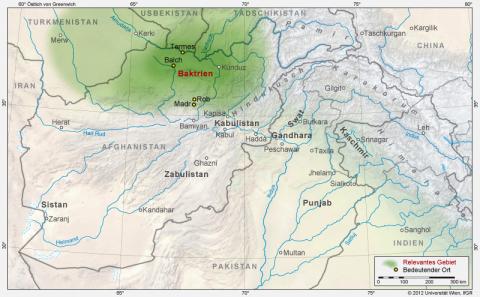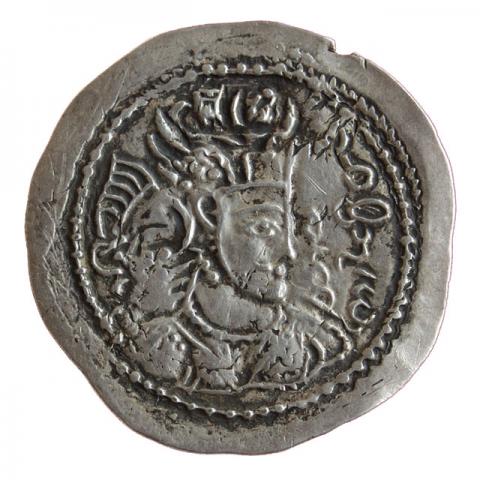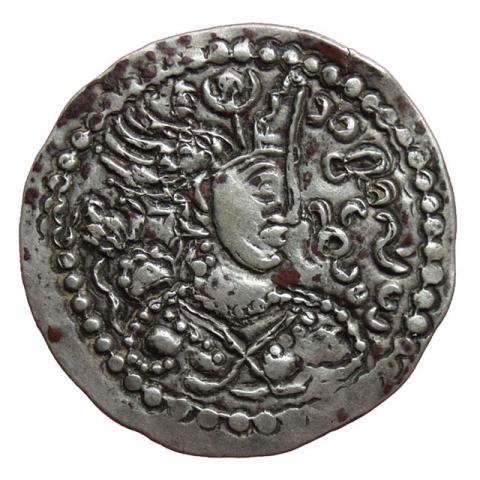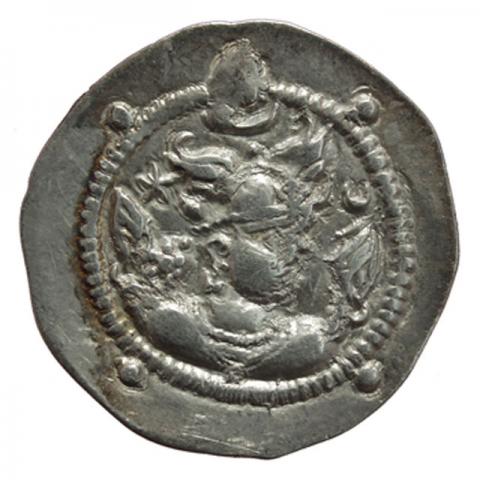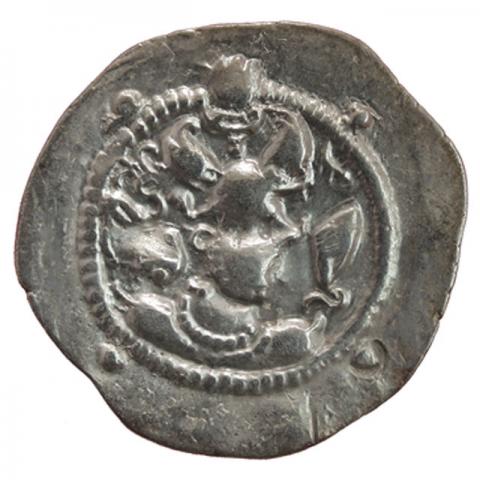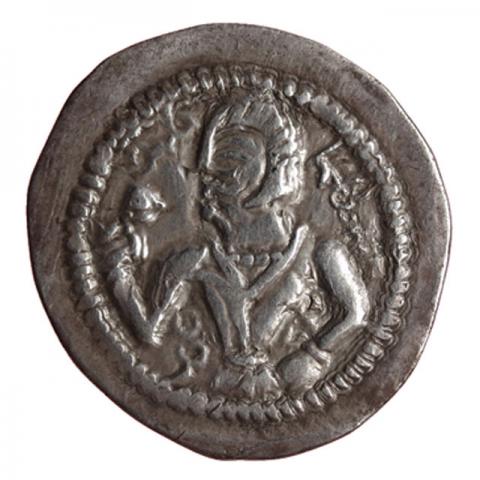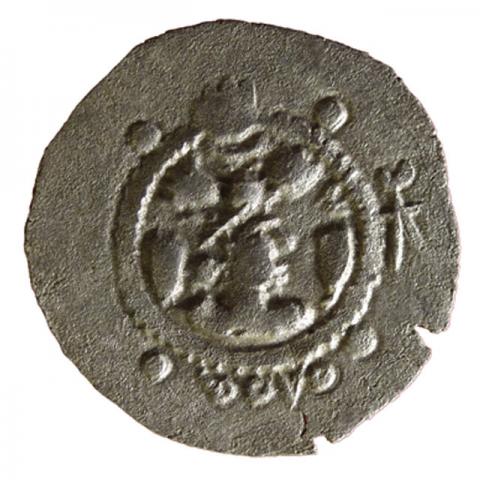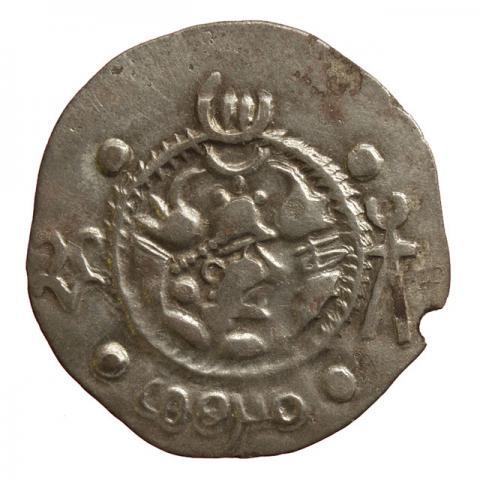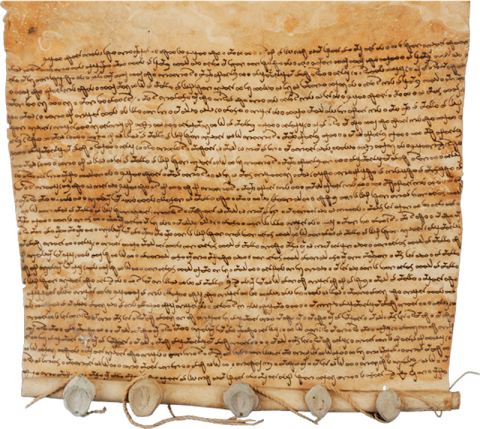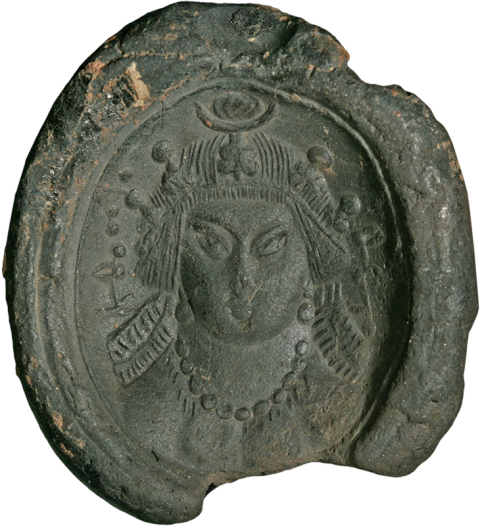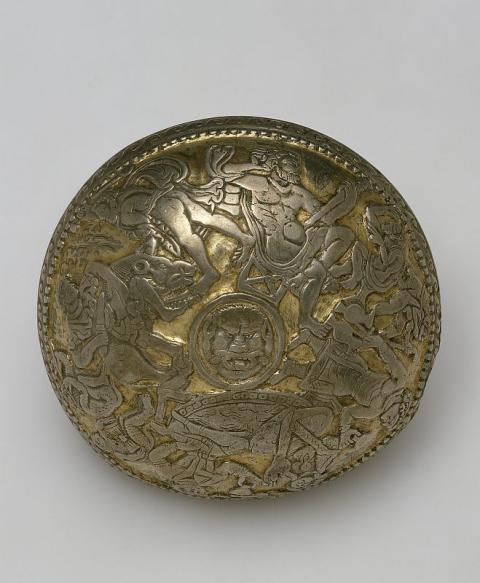A. Symbol (tamga) of the Hephthalites
B. Contract (ink on leather, with five clay bullae) in the Bactrian language, from the archive of the kingdom of Rob (Bactria, North Afghanistan). (© Nicholas Sims-Williams)
With this contract two residents of Madr, a city in the kingdom of Rob, are forced to sell a piece of agricultural land for eight gold dinars since they are not able to pay the taxes on their house that the Hephthalites had imposed. The contract is dated to 483/484 CE. In 484 CE Peroz fell in battle against the Hephthalites; thereafter Bactria came under Hephthalite rule.
C. Clay seal of a Hephthalite king with the Bactrian inscription "The Lord (Yabgu) of the Hephthalites". End 5th/first half of the 6th century CE. (© Aman ur Rahman)
D. Silver bowl with a royal couple at a banquet. Probably produced in Bactria, 6th/7th century CE. Found before 1841 in the Ural foothills (Perm' Region). (© St. Petersburg, State Hermitage Museum, Inv.-no. S-75)
The royal couple sits on a throne bench covered by a carpet. Left is a servant with a wine jug, and right two monkeys playing music; a winged camel with a wreath in its mouth floats above the couple. The king, holding a drinking cup, wears Central Asian costume; this depiction is similar to the image of the Hephthalite princes on the coins (No. 6).


